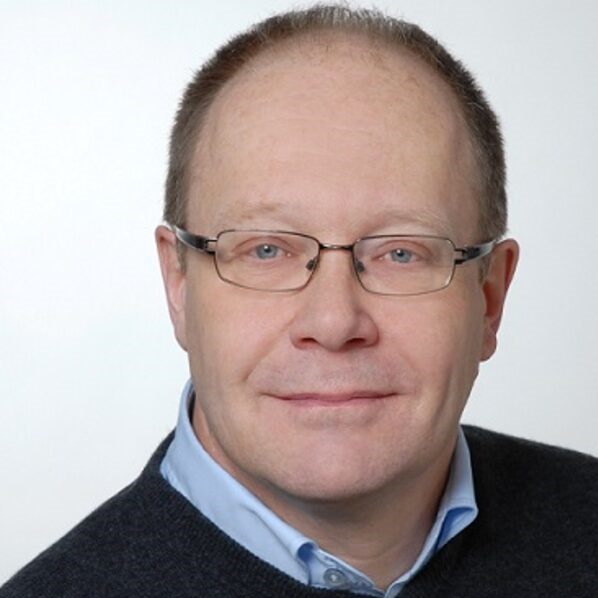Presentations
- Hits: 1621

Coarse geometric methods for generalized wavelet approximation theory
H. Führ
Abstract: Generalized wavelet systems, as studied in this talk, arise from the translation action on a family of mother wavelets, chosen to ensure perfect reconstruction. This rather general notion comprises Gabor systems (including the multi-window variety), generalized wavelet systems arising from the action of matrix groups such as shearlets, but also curvelets and related constructions. The approximation theoretic properties of these systems are coded in the associated decomposition spaces, defined by imposing suitably weighted Lp-norms on the transform side. Understanding the dependence of the scale of decomposition spaces on properties of the wavelet system is one of the basic problems of the theory, and generally not well understood. The talk translates this question into a problem from the domain of coarse geometry, concerning quasi-equivalence of suitably defined metrics in frequency domain, and presents several applications.
- Hits: 1195

Felix Voigtlaender
Coorbit dual molecules and convolution dominated operators
Abstract: Many continuous frames—including Gabor frames, wavelets, and certain types of shearlets—are induced by group representations. An important question is whether one can obtain a discrete frame by sampling such a localized continuous system. Preferably, the discrete dual frame should be well-localized as well, ensuring that the frame expansion extends to function spaces beyond the Hilbert space setting.
One of the main results of coorbit theory shows that this is indeed possible in many cases. In this talk, we present a novel proof of this fact. This proof is more accessible than the traditional one and yields a stronger conclusion, showing that the dual frame forms a family of coorbit molecules. The main proof ingredient is a novel local holomorphic calculus for convolution-dominated operators on general locally compact groups, which might be of independent interest.
In more technical detail, let G be a locally compact group and let π be an irreducible representation of G on a Hilbert space ℋπ. The voice transform of f with respect to g is Vgf(x)=⟨f, π(x)g⟩. We assume that Vgg belongs to the Wiener amalgam space W(L∞, Lw1) and is normalized so that
f = ∫GVgf(x) π(x)g dμ(x) ∀ f ∈ ℋπ.
We show that for every discrete, sufficiently dense set Λ ⊂ G, the family (π(λ)g)λ ∈ Λ is a frame for ℋπ, and there exists a dual frame (hλ)λ ∈ Λ that forms a family of coorbit-molecules, in the sense that
|Vghλ(x)| ≤ Θ(λ−1x)
for all λ ∈ Λ, with a suitable envelope Θ ∈ W(L∞, Lw1).
This molecule condition implies that the size of the coefficients (⟨f, hλ⟩)λ ∈ Λ fully reflects the size profile of the voice transform Vgf. It also ensures that the frame expansion
f = ∑λ ∈ λ⟨f, hλ⟩ π(λ)g = ∑λ ∈ λ⟨f, π(λ)g⟩ hλ
extends to the associated coorbit spaces.
Finally, for very regular sets Λ (in particular for quasi-lattices), we show that the canonical dual frame forms a family of coorbit-molecules.
- Hits: 1250

- Hits: 1236

Function Spaces for Fourier Analysis A Fresh Approach and Banach Gelfand Triples
H. Feichtinger
Abstract: This is not a technical, but a conceptual talk, with the goal to describe a mindset that should help to better understand important aspects of modern Fourier and Time-Frequency Analysis. New problems (such as Gabor expansions) require new tools, in our case new function spaces, such as Wiener amalgams or modulation spaces.
It turned out that these spaces, specifically the Fourier invariant Segal algebra S0(Rd) and its dual S*0(Rd) (endowed with the w* topology) also provide a much more convenient tool for the description of the Fourier transform than classical Lp-theory. At can be developed without reference to the theory of tempered distributions developed by Laurent Schwartz, but is in fact a (simplified) version of it, sufficient for most engineering applications. Therefore we call members of S*0(Rd) mild distributions.
It can be used to derive key results, like the Shannon Sampling Theorem or the description of linear, time-invariant systems as convolution operators by some impulse response (or via a transfer function on the Fourier transform side). The setting of mild distributions allows correctly to handle Dirac combs, discrete periodic measures, or Lp-spaces on an equal footing and shows how to (correctly) turn typical heuristic statements found in books on Fourier analysis into correct claims, using distributional convergence (resp. w*-convergence) inside of S*0(Rd).
Thus the setting of the Banach Gelfand Triple (S0,L2,S*0)(Rd) appears to be the appropriate setting for all this, because it allows to justify mathematically what engineers and physicists are doing, but also because it can be used to support computational schemes. Finally the setting grew out of long-standing attempts to develop a theory of extended Fourier transforms over LCA groups.
The talk comes with a number of illustrations, showing via suitable pictograms for the different function spaces what the correct inclusion relations are between them. At the technical level we only need basic functional analysis and a bit of group theory.
Please take it as a showcase for an extensive new landscape, allowing you to take just a glimpse into a novel approach to what I call Conceptual Harmonic Analysis (more then Abstract + Numerical Harmonic Analysis).
- Hits: 1552



